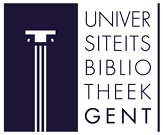Agronomic Performance of Four CIMMYT Wheat Genotypes in the Tropical Environment of Semarang Regency in Central Java, Indonesia
Abstract
Several wheat genotypes collected by the International Maize and Wheat Improvement Center (CIMMYT) in Mexico can be introduced in the tropical regions of Indonesia to support national wheat production. Currently, four genotypes originating worldwide are available for introduction: CWI 10553, CWI 17903, CWI 89948, and CWI 8124. This research aims to identify the performance and yield of these genotypes grown in a controlled environment. Wheat seeds were cultured in MS medium then transplanted into a pot filled with mixture of soil and compost. Pot cultivation was carried out at a latitude of 800 m asl. Fertilizer was applied four times: 1) 2 g of guano during transplanting; 2) 2 g of guano + 1 g of urea + 1 g of ZA + 2 g of P2O5 + 1 g of KCl three weeks after transplanting, 3) 2 g of guano 6 weeks after planting, and 4) 1 g of urea + 1 g of ZA + 2 g of P2O5 + 1 g of KCl during grain filling. By the end of the growing season, 10 plants of CWI 10553, 2 plants of CWI 17903, 4 plants of CWI 89948, and 10 plants of CWI 8124 survived until grain production. CWI 8124 seemed to adapt well as indicated by its relatively high number of tillers, number of seeds per spike, and grain weight per plant. CWI 89948 was less adaptive as its height and productivity were relatively low. Generally speaking, two genotypes in the Semarang Regency of Central Java suggested for further study were CWI 8124 and CWI 10553.
Keywords
Full Text:
PDFReferences
Altuhaish, A. A. K., Miftahudin, Trikoesoemaningtyas, & Yahya, S. (2014). Field Adaptation of Some Introduced Wheat (Triticum aestivum L.) Genotypes in Two Altitudes of Tropical Agro- Ecosystem Environment of Indonesia. HAYATI Journal of Biosciences, 21(1), 31-38. https://doi.org/10.4308/hjb.21.1.31
Casagrande, C. R., Mezzomo, H. C., Silva, C. M., Lima, G. W., Souza, D. J. P., Borém, A., & Nardino, M. (2022). Selection indexes based on genotypic values applied to Brazilian tropical wheat breeding. Agronomy Science and Biotechnology, 8, 1-16. https://doi.org/10.33158/asb.r171.v8.2022
Fadli, M., Farid, M., Yassi, A., Nasaruddin, Anshori, M. F., Nur, A., & Suratman. (2022). Evaluation of the advanced yield trial on tropical wheat (Triticum aestivum) mutant lines using selection index and multivariate analysis. Biodiversitas, 23(1), 540-547. https://doi.org/10.13057/biodiv/d230158
Fari, M. d., Nasaruddin, N., Musa, Y., Anshori, M. F., Ridwan, I., Hendra, J., & Hendra, J. (2020). Genetic Parameters and Multivariate Analysis to Determine Secondary Traits in Selecting Wheat Mutant Adaptive on Tropical Lowlands. Plant Breeding and Biotechnology, 8(4), 368-377. https://doi.org/10.9787/PBB.2020.8.4.368
Farid, B. D. R. M., Nurazika, A. D., Musa, Y., Rafiuddin, Amin, A. R., & Kaimuddin. (2020). Evaluation of several tropical wheat genotypes (Triticum aestivum L.) on various water availability in the lowlands. IOP Conference Series: Earth and Environmental Science, 486(1), 1-8. https://doi.org/10.1088/1755-1315/486/1/012093
Galushasti, Andarula, Dini Putri Ningtyas, Jumiatun Jumiatun, and Ilham Mukhlisin. 2024. “Improvement of Maize Growth and Production through a Combination of Leaf Defoliation and SP-36 Dosage in a Close Cropping System.” Agro Bali : Agricultural Journal 7(1), 24–32. https://doi.org/10.37637/ab.v7i1.1294
Huertas-García, A. B., Guzmán, C., Ibba, M. I., Rakszegi, M., Sillero, J. C., & Alvarez, J. B. (2023). Processing and Bread-Making Quality Profile of Spanish Spelt Wheat. Foods, 12(16), 1-12. https://doi.org/10.3390/foods12162996
Huertas-García, A. B., Tabbita, F., Alvarez, J. B., Sillero, J. C., Ibba, M. I., Rakszegi, M., & Guzmán, C. (2023). Genetic Variability for Grain Components Related to Nutritional Quality in Spelt and Common Wheat. Journal of Agricultural and Food Chemistry, 71(28), 10598-10606. https://doi.org/10.1021/acs.jafc.3c02365
Hyles, J., Bloomfield, M. T., Hunt, J. R., Trethowan, R. M., & Trevaskis, B. (2020). Phenology and related traits for wheat adaptation. In Heredity, 125(6), 417-430. https://doi.org/10.1038/s41437- 020-0320-1
Konvalina, P., Capouchová, I., Stehno, Z., & Moudrý, J. (2010). Agronomic characteristics of the spring forms of the wheat landraces (einkorn, emmer, spelt, intermediate bread wheat) grown in organic farming. Journal of Agrobiology, 27(1), 9-17. https://doi.org/10.2478/s10146-009-0002-3
Nasution, M. N. H., Harahap, R. A., & Nur, A. (2019). Adaptasi galur dan varietas gandum (Triticum aestivum L.) di dataran medium Padang Sidimpuan Sumatera Utara. Agrium, 22(2), 107-110. https://jurnal.umsu.ac.id/index.php/agrium/article/view/3719/3257
Nhemachena, C. R., & Kirsten, J. (2017). A historical assessment of sources and uses of wheat varietal innovations in South Africa. In South African Journal of Science 113(3–4), 1-8. https://doi.org/10.17159/sajs.2017/20160008
Nur, A., Human, S., & Trikosoemaningtyas. (2014). Keragaman Genetik Gandum Populasi Mutan M 3 di Agroekosistem Tropis Genetic Variability of Wheat M 3 Mutant Population in Tropical Agroecosystem. Jurnal Ilmiah Aplikasi Isotop Dan Radiasi, 10(1), 35–44. https://karya.brin.go.id/id/eprint/1445/
Nuraeni, E., Wahyu, Y., & Trikoesoemaningtyas. (2021). Selection of wheat (Triticum aestivum) lines for the high altitude of indonesia based on single-and multi-character adaptation. Biodiversitas, 22(12), 5530-5535. https://doi.org/10.13057/biodiv/d221236
Putri, N. E., Sutjahjo, S. H., Trikoesoemaningtyas, Nur, A., Suwarno, W. B., & Wahyu, Y. (2020). Wheat transgressive segregants and their adaptation in the tropical region. Sabrao Journal of Breeding and Genetics, 52(4), 506-522. https://research.ebsco.com/c/ffi4py/viewer/pdf/j2n6v24b5v
Rachmadhani, S., Damanhuri,dan Lita Soetopo (2017). Uji Daya Hasil 18 Genotip Gandum (Triticum aestivum L.) di Dataran Rendah. Jurnal Produksi Tanaman, 5(8), 1316–1320. https://protan.studentjournal.ub.ac.id/index.php/protan/article/view/509
Syahruddin, K., Nur, A., Azrai, M., & Larekeng, S. H. (2019). Character evaluation and selection of tropical wheat lines in the long period of the dry season and high temperature. IOP Conference Series: Earth and Environmental Science, 270(1). https://doi.org/10.1088/1755- 1315/270/1/012053
Tadesse, W., Manes, Y., Singh, R. P., Payne, T., & Braun, H. J. (2010). Adaptation and performance of CIMMYT spring wheat genotypes targeted to high rainfall areas of the world. Crop Science, 50(6), 2240-2248. https://doi.org/10.2135/cropsci2010.02.0102
Thambugala, D., Menzies, J. G., Knox, R. E., Campbell, H. L., & McCartney, C. A. (2020). Genetic analysis of loose smut (Ustilago tritici) resistance in Sonop spring wheat. BMC Plant Biology, 20(1), 1-10. https://doi.org/10.1186/s12870-020-02525-x
Zhou, H., Riche, A. B., Hawkesford, M. J., Whalley, W. R., Atkinson, B. S., Sturrock, C. J., & Mooney, S. J. (2021). Determination of wheat spike and spikelet architecture and grain traits using X-ray Computed Tomography imaging. Plant Methods, 17(1), 1-9. https://doi.org/10.1186/s13007-021- 00726-5
Zubaidi, A., Ma’shum, M., Gill, G., & McDonald, G. K. (2018). Wheat (Triticum aestivum) adaptation to Lombok Island Indonesia. Agrivita, 40(3), 556-566. https://doi.org/10.17503/agrivita.v40i3.1637.
Refbacks
- There are currently no refbacks.


























